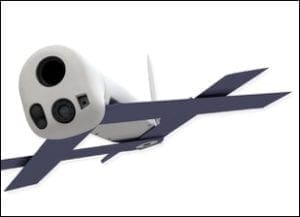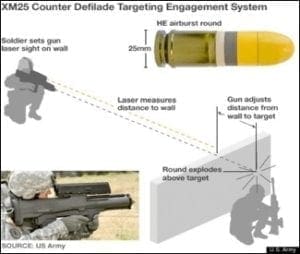“Master Euphrates tells bold and nice
Sincere weeping in his eyes.”
The counterterrorism struggle, which had been carried out in the mountains or the forests until recently, has now transformed into urban warfare. Some of the prominent reasons which caused this to happen are; the limitations of logistics capabilities; limitations of the land structure for rural engagements; the difficulty of hiding and protecting in the field due to technological developments; and especially cultural geography of the near-term conflict areas. It is well known to all armies that; the control and seizure of the urban territory do not coincide with the tactics and strategies applied in the rural areas in urban wars.
One of the important requirements of urban warfare operations is intelligence (especially human intelligence), as urban warfare requires very detailed and accurate identification and surveillance of the enemy and the terrain. Due to its nature, military operations on urban terrain are heavily dependent on intelligence and reconnaissance.[1]
In this article, some of the problems about identification and surveillance faced by urban warfare ground troops and innovative solutions against those challenges are reviewed.
A. Vertical Surveillance:
In rural areas, occupying the dominant terrain and moving from higher to lower altitude is preferred. Although capturing the hills around urban areas is essential for preventing the reinforcement of the region by terrorists/insurgents and for controlling entry and exit to the area; in fact, there is no effect on the terrorists/insurgents that are hiding inside the buildings and positioned among the streets and preparing mine traps/IED in the area. Besides, forming a base on top of a hill also means to give your image to the enemies and to become a target.
Recently it is observed that urban operation areas are being composed of densely populated areas (close structures / narrow streets) due to cultural and geographical reasons. So, the ability to observe the terrorist/insurgent groups positioned horizontally between the streets is reduced, and horizontal surveillance gained importance.
Close combat has gradually gained importance in the urban warfare, which limits the surveillance capability of the operation troops. Retaining the dominant terrain feature around the city will no more have an advantage on the surveillance unless the surveillance is done from the high and see the whole residential area. For this reason, it is important to use vertical surveillance devices, which have the capability to observe the operation area continuously. Vertical surveillance devices can be utilized effectively also for the detection of trapping mines/IEDs, which are frequently used in residential areas.
In short-term operations, sectors such as tall buildings, places of worship (mosque minarets, bell towers, etc.) can be used for surveillance purposes. However, it is a fact that during the urban warfare, aircraft or artillery bombers will destroy many buildings. According to the lessons learned in the Grozny battles[2], it is important to control cultural and historical buildings, which are not being destroyed (except ISIL) because they are holy sites or religious buildings. This type of structures can also be used as a reference point. Minarets, bell towers, smokestacks are also ideal places for snipers, artillery observers and forward air controllers. [3]
In long-term operations, vehicles such as balloons and UAVs have become prominent. Here, it is important to ensure the flow of current intelligence between the UAV and the units in the urban field. Delaying information to the ground units about hidden terrorists/insurgents will cause to casualties.
Although it is not possible to see terrorist/insurgent groups hidden inside the buildings or the tunnels, it will be possible to observe mobility during the conflict or while the operation is proceeding. Soon, it will be useful to monitor the tunnels from air and to distribute camera systems showing the inside of adjacent buildings to the operation units, so that they will be able to detect the threats from a safe distance.
Although it is difficult to distinguish civilians and terrorists/insurgents in urbanized terrain especially when terrorists/insurgents hide their weapons, vertical surveillance devices can be useful by using cameras which have enhanced resolution.
B. Immediate Engagement:
It is highly possible that terrorist/insurgents have previous experience with the terrain, and can easily disappear in urban areas. Therefore, the probability of success may diminish if identifying and targeting them takes too much time.
For this reason, I argue that, to fire the target instantly, the importance of the UAVs, such as Switchblade[4] or the Lethal Miniature Aerial Munition System-LMAMS[5] (the flight time should be minimum 15 minutes) will increase. Being also cost effective, “armed drones” will soon be a force multiplier. Hence it seems that we will encounter a broader use of armed drones in urbanized operation field.[6]
 Switchblade
Switchblade
(Source: https://www.avinc.com/uas/view/switchblade)
In this regard, drones, which can also carry bullet-size munitions can be built up by the 3D printer behind the front line, and specific kind of ammunitions can be loaded on these micro-drones for neutralizing a person or a small group. It is noted that part of the Pentagon’s $ 582.7 billion defense budget for 2017 has been devoted to the production of “3D printed micro drone”, which is resistant to fierce winds and can be thrown from behind a moving aircraft at the speed of Mach 0.9.[7]
MIT announced in March 2016 that Perdix drones were produced by 3-D using Kevlar and carbon fiber. The drones weigh about one pound and they can stay in the air for about 20 minutes by reaching speeds of 40 to 60 knots.[8] When very light weapon carrying capability is added to these micro drones, it will be a groundbreaking development which may bear the consequence to replace a soldier with a drone.
At present, opposing countries began to use terrorist/insurgent organizations as proxies as a way of confronting each other in regions of conflicting interests. As an inevitable consequence of this fact, it is likely that terrorist/insurgent organizations also may acquire such kind of sophisticated weapons. Hence, it will be important to consider anti-drone tactics and technology in the future as well.
C. New Generation Weapons:
US President’s new National Security Advisor LTG H.R. McMaster draws attention to the US army’s recent wars, and says that “most casualties are caused by close-range engagements”. He also added that “the army should prioritize the close-combat capability by equipping the Army with the revolutionary XM25[9] precision-guided grenade launcher and other advanced weapons like the Lethal Miniature Aerial Munition System (LMAMS)”[10]. But it could also mean giving soldiers the ability to target, locate and get fires into the fight quickly, he added.[11]
XM25 precision-guided grenade launcher, which can be thrown to 500 meters, is used in infantry battles as a game changer and force multiplier that will lead to tactical changes.[12] [13]
 XM25
XM25
(Source: http://www.huffingtonpost.com/2010/11/30/xm25-smart-gun-unveiled-by-us-military_n_789969.html)
Sniper systems are widely used in urban warfare. In this context, it is necessary to shoot less but accurate shots, for the location of the sniper not to be determined by terrorist/insurgents. Systems such as EXACTO[14], developed by the US Advanced Defense Research Projects Agency (DARPA) will likely gain importance for accurate shooting.
 Exacto
Exacto
(Source: http://www.darpa.mil/news-events/2015-04-27)
D. Recognition / identification problem:
One of the most critical issues in the war against terrorism (perhaps the first one) is to distinguish a terrorist/insurgent from a civilian. Urban terrorist/insurgents live in the society and it is often impossible to identify them because of their undercover. They can adapt to the shapes of the surrounding, they can make themselves invisible for the security forces.
Therefore, in counterterrorism there is always the problem of obscurity. One of the biggest problems in the city is the recognition and identification of a terrorist/insurgent who has been camouflaged. Because of the proximity of distance between regular units and hostile forces, urban warfare bears command and control problems and increase the risk of friendly fire casualties.[15]
In order to prevent this, it would be useful to use standard type uniforms in all units, including local elements. It is estimated that it will reduce all the time loss and doubts in engagement, if the identification chips or barcodes/QR codes (Identification, friend or foe (IFF)” systems which are used in airplane/stinger missiles), are placed on the uniforms. It is also possible to place these types of chips/QR codes on the protective goggle or gun sighting system.
Another frequently experienced method is the decontamination of the civilian population from the city excluding the terrorist/insurgent groups. In the case of Fallujah in Iraq, US forces have announced to the people living in Fallujah that, the city should be abandoned by those who are not involved in the war, and that operation will begin soon. It has been noted that this approach greatly reduces the problem of identifying resistance forces.[16] That is why ISIL does not allow the civilians to leave the region. However, to find a solution to this evacuation problem seems very difficult due to possible civilian losses. In conventional warfare, the smoke operation is used to hide the lines of withdrawal, while the enemy is engaged with heavy fire pressure.
E. Modified Vehicles:
The change in battle conditions has also changed the vehicles used. The utilization of civilian jeep-type vehicles has increased to provide immediate transfer of armed groups. For instance, Toyota Hilux vehicles were used in northern of Iraq in the 1990s as a transformed vehicle.
The use of jeeps/pick-up trucks by resistance forces or terrorist/insurgents, which is common in North Africa and the Middle East, by mounting anti-aircraft guns or machine guns on them, has become the camouflage method that both enhances mobility and facilitates to disappear among civilian population.
Increasing mobility and launching operations with small units will require development of vehicles that are more suitable to operate in urbanized terrain. Although we can see the positive effects of Mine-Resistant Ambush Protected (MRAP) vehicles in urbanized terrain, these type vehicles are only for transportation security, not for combat missions. They have very limited mobility in urban warfare.
F. Use of Social Media as a Psychological Warfare Element:
In the social media, there are images of vehicle destructions, captive interrogations, especially images of executions by means of beheading. The goal of all those is to demotivate the fighting will and persistence of the other side. Therefore, it is crucial to use or monitor social media.
Conclusion:
In this article, I analyzed some of the problems in today’s warfare which is taking place in urban areas. I will end my piece with one of the most critical issues, that is distinguishing civilians from the terrorist/insurgents. Military operation units, as an inevitable consequence of how they were trained, are mostly interested in the number of neutralized terrorist/insurgents. However, when civilians suffer from military operations conducted, then this may have long-term effects in which cases the civilians affected negatively from those operations will most likely bear a grudge against the side who caused killing of their relatives. This, for certain, will be exploited by terrorist/insurgents to support their narratives against the good side. Having the experiences of Afghanistan and Iraq very fresh in mind, harming civilians at any costs (even though it may have been for neutralizing the leader of the terrorist/insurgent organization) will have long-term and persistent negative impacts on the strategic end state.
In the fight against terrorism, governments will likely to be obliged to move away from the conventional way of the fight and give up old types of weapons and doctrines. Technology will be immensely used; social media will play a more significant role and mobility and protection will be provided with alternative systems. We are already seeing the impacts on the Syrian battlefield. Those who have good lessons learned mechanisms will be better prepared for the wars in the future.
References:
[1] http://www.rand.org/pubs/research_reports/RR1602.html (page:126, Increasing Demand for Intelligence: By nature, urban operations are intelligence- and reconnaissance intensive)
[2] https://web.archive.org/web/20070927220039/ http://www.smallwarsjournal.com/documents/wolvesden.htm
[3] https://southfront.org/why-the-battle-for-aleppo-is-so-long-and-so-important/
[4] https://www.avinc.com/uas/view/switchblade
[5] http://www.defensemedianetwork.com/stories/lethal-miniature-aerial-munition-system-lmams/
[6] http://smallwarsjournal.com/jrnl/art/formless-warfare-an-innovative-concept-to-gather-more-information-analyze-it-faster-and-str
[7] http://www.3ders.org/articles/20160203-pentagon-budget-proposal-includes-plan-for-3d-printed-microdrones.html
[8] http://compositesmanufacturingmagazine.com/2017/01/department-of-defense-successfully-tests-composite-drones/
[9] https://en.wikipedia.org/wiki/XM25_CDTE
[10] http://www.defensemedianetwork.com/stories/lethal-miniature-aerial-munition-system-lmams/
[11] http://www.defensenews.com/articles/mcmaster-army-must-prioritize-close-combat-capability
[12] http://breakingdefense.com/2016/02/biggest-change-for-infantry-since-wwii-xm25/
[13] http://thediplomat.com/2016/04/will-this-weapon-change-infantry-warfare-forever/
[14] http://www.darpa.mil/news-events/2015-04-27
[15] https://southfront.org/why-the-battle-for-aleppo-is-so-long-and-so-important/
[16] http://www.rand.org/pubs/research_reports/RR1602.html “Reimagining the Character of Urban Operations for the U.S. Army” page: xii

